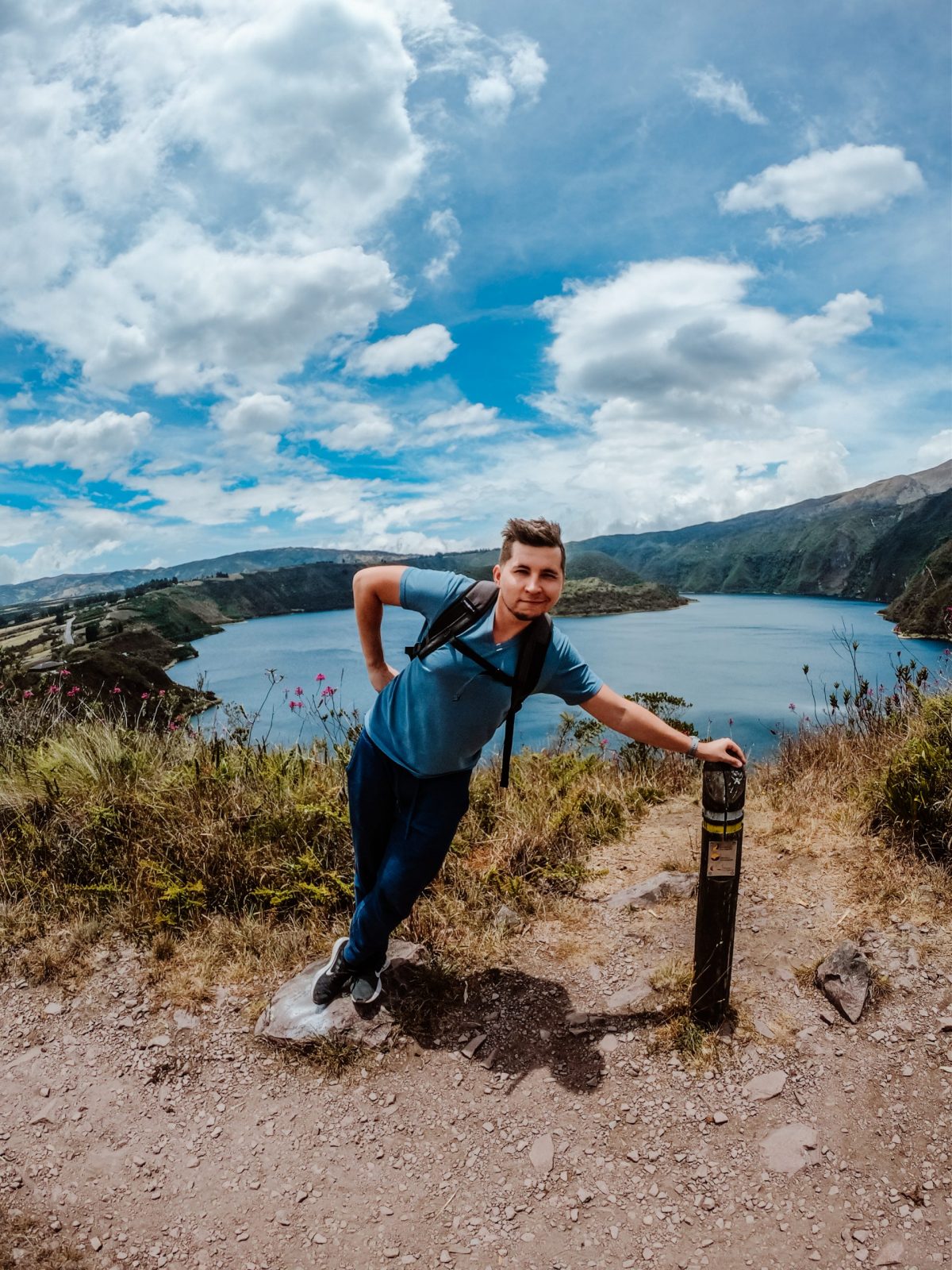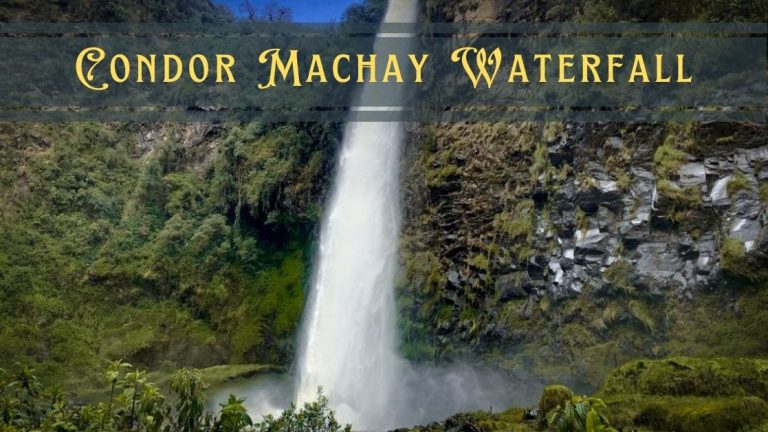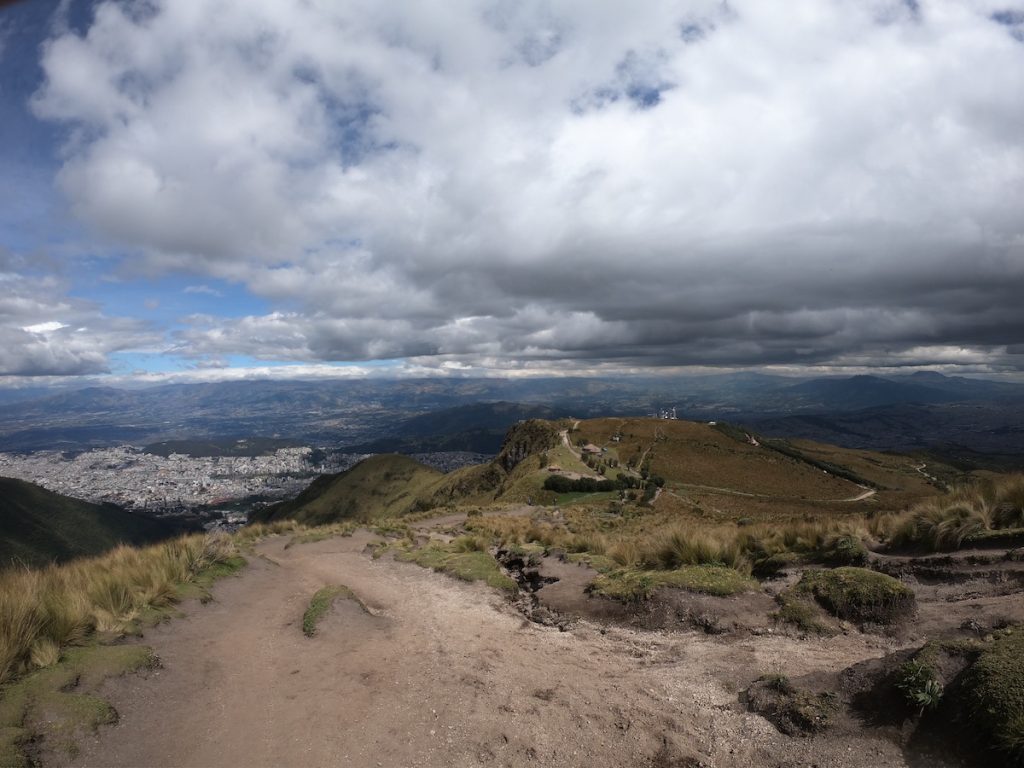The Condor Machay waterfall is nestled near Rumipamba, just 17 kilometers from Ecuador’s capital, Quito. The name Condor Machay translates to “Condor Nest” in the Quichua language, hinting at the majestic nature of this hidden gem.
The two-hour hike to reach the waterfall is absolutely worth every step. The trail takes you across a series of bridges over the Pita River, surrounded by lush greenery and a diverse array of plants and wildlife.
This family-friendly hike winds along the banks of the rushing Pita River, leading you through enchanting elfin woodlands and across iron bridges before rewarding you with the stunning sight of the Condor Machay Waterfall. In this post, I’ll be sharing our hiking adventure to this beautiful spot and everything we discovered along the way.
Looking back, visiting Condor Machay required some planning – from coordinating transportation to timing our visit for the best experience. Skip the uncertainty I faced and get a FREE personalized Ecuador trip quote from my trusted local experts who know how to perfectly incorporate this hidden gem into your Quito adventure. Your booking helps support both this blog and local Ecuadorian communities.
Plan perfect trip to Ecuador & Galapagos
I spent countless hours researching everything about traveling to Ecuador, and I created this blog for fellow travel enthusiasts who want the best, most reliable information. But if you want to save time, we’ve partnered with the top local agency to plan your dream trip.
How to Get to Condor Machay Waterfalls
By Bus
To get to Condor Machay from Quito, we headed to the Terminal Terrestre (bus station). The bus fare to Sangolquí/Selva Alegre is just $0.50 for a one-way trip. Once there, we took a taxi to the trailhead, which cost around $15. It’s a good idea to coordinate with your taxi driver—either arrange for them to wait or schedule a pickup for your return. That way, you won’t have to worry about finding transportation back after your hike.
By Car
If you prefer, you can also reach Condor Machay Waterfall by hiring a private car or driving yourself. Just pin the location on your maps app and follow the directions. However, keep in mind that the directions can get a bit confusing because there’s another waterfall called Machay, so be sure you’re heading to the right one.
We found using Waze particularly helpful—just set it to Barrio Selva Alegre in Sangolquí, Ecuador. From there, you can simply follow the road signs guiding you to the waterfalls. This way, you can enjoy a hassle-free drive and focus on the beautiful scenery along the way.
Hiking to Condor Machay Waterfalls
Trails
If you’re traveling by private car, be prepared for someone to collect a small fee for watching over your vehicle, especially on weekends or during national holidays. On weekdays, it’s usually less crowded, and your car might be left alone. However, it’s best to avoid leaving valuables inside. If you must, tuck them away in a hidden spot to be safe.
To reach the waterfall, take the trail on the right side of the parking lot. There’s another path on the left that leads to more cascades and is definitely worth exploring if you have extra time.
The trail to Condor Machay is well-maintained, featuring several bridges over the Rio Pita. Each bridge offers fantastic views of the river and the lush vegetation along the banks. While the hike isn’t particularly difficult, it is fairly long, so be prepared for a bit of a trek.
Flora and Fauna
With the large crowd that day, spotting birds was nearly impossible. However, we did catch sight of a Caracara nest. These large, dark birds often look like vultures as they soar high in the sky. We were lucky enough to see one land on a rock face before it disappeared into a small crevice for a while.
We were also fortunate to spot a few orchids, even though it was still early in the blooming season. If you visit, be sure to keep your eyes above the trail, especially in wetter areas where sunlight filters through the foliage. Orchids tend to thrive in moist conditions but also seem to enjoy a bit of sunlight during the day. We found our best luck around the rocky slope where the creek flows—it was the perfect spot for these delicate blooms to show off their beauty.
Trust me, while most visitors stick to Quito’s city center, natural wonders like Condor Machay show a completely different side of the region! Want to experience both cultural highlights and stunning nature without any logistical hassles? Get a FREE expert itinerary from my recommended local agency. Your booking supports this blog and local Ecuadorian businesses.
The Waterfalls
When we hiked during the rainy season, the mountainsides were absolutely alive with water. We were captivated by the numerous waterfalls cascading down the rocky slopes, creating a stunning display. The river was flowing swiftly, with powerful rapids that added to the dramatic scenery. It was truly a sight to behold, and the sound of rushing water surrounded us throughout the hike, making the experience even more memorable.
The highlight of our trek was, without a doubt, the Condor Machay waterfall itself. Thanks to the recent rainy days, the stream feeding the waterfall was swollen, sending torrents of water cascading down into the pool below. We took a break at the base, enjoying our packed lunch with the misty spray cooling our tired bodies. A gentle breeze carried some of the water our way—just enough to refresh us after the hike. Some visitors dipped their feet into the icy water, but no one was brave enough to fully enter the pool.
Unfortunately, our peaceful moment didn’t last long. About 10 minutes later, a group of nearly 150 secondary school students on a field trip arrived. The once serene atmosphere was suddenly filled with laughter and shouting. We tried to enjoy our lunch amidst the chaos for about half an hour, but eventually, we decided it was time to start heading back.
The return hike took us about an hour and was wonderfully peaceful… at least until the kids, racing back to the parking lot, caught up with us. I have to admit, I was craving some quiet by that point—call me grumpy, but the tranquility was what I had been looking forward to.
All in all, plan for around three and a half hours to fully enjoy the Condor Machay waterfall. If you’re up for more adventure, there are additional waterfalls you can explore by trekking in the opposite direction from the same parking area—though some of these require crossing the river without bridges. You could easily make a full day out of it. Add about an hour for public transportation to and from Quito (Playón Marin terminal), and you’ve got a complete day’s adventure.

Planning trip to Ecuador?
My wife and I rented a car for 15 days and traveled from the northern part of Ecuador to the south, visiting amazing cities like Quito, Otavalo, Baños, Cuenca, and Guayaquil. Along the way, we explored iconic places such as Cotopaxi National Park, Quilotoa Lake, and many more breathtaking destinations.
Not many blogs cover traveling in Ecuador in detail, so I spent nearly three weeks creating this comprehensive Ecuador travel guide based on our trip. It’s packed with everything you need to know, and honestly, I consider it the best free travel guide about Ecuador out there.
If you’re planning a trip to Ecuador, don’t forget to use my link for discounted hotel prices through Booking.com. It’s a great way to support my blog while saving money on your accommodations!
Bottom Line
Condor Machay Waterfall is truly a natural gem that’s worth the visit. If you find yourself with some extra time while in Quito, I highly recommend taking the trip out to see this beautiful spot. It’s an ideal getaway for nature lovers, with its stunning views and serene surroundings. Having a little picnic by the waterfall is also a wonderful experience, perfect for families or groups of friends looking to enjoy some quality time amidst nature.
Plan perfect trip to Ecuador & Galapagos
I spent countless hours researching everything about traveling to Ecuador, and I created this blog for fellow travel enthusiasts who want the best, most reliable information. But if you want to save time, we’ve partnered with the top local agency to plan your dream trip.




